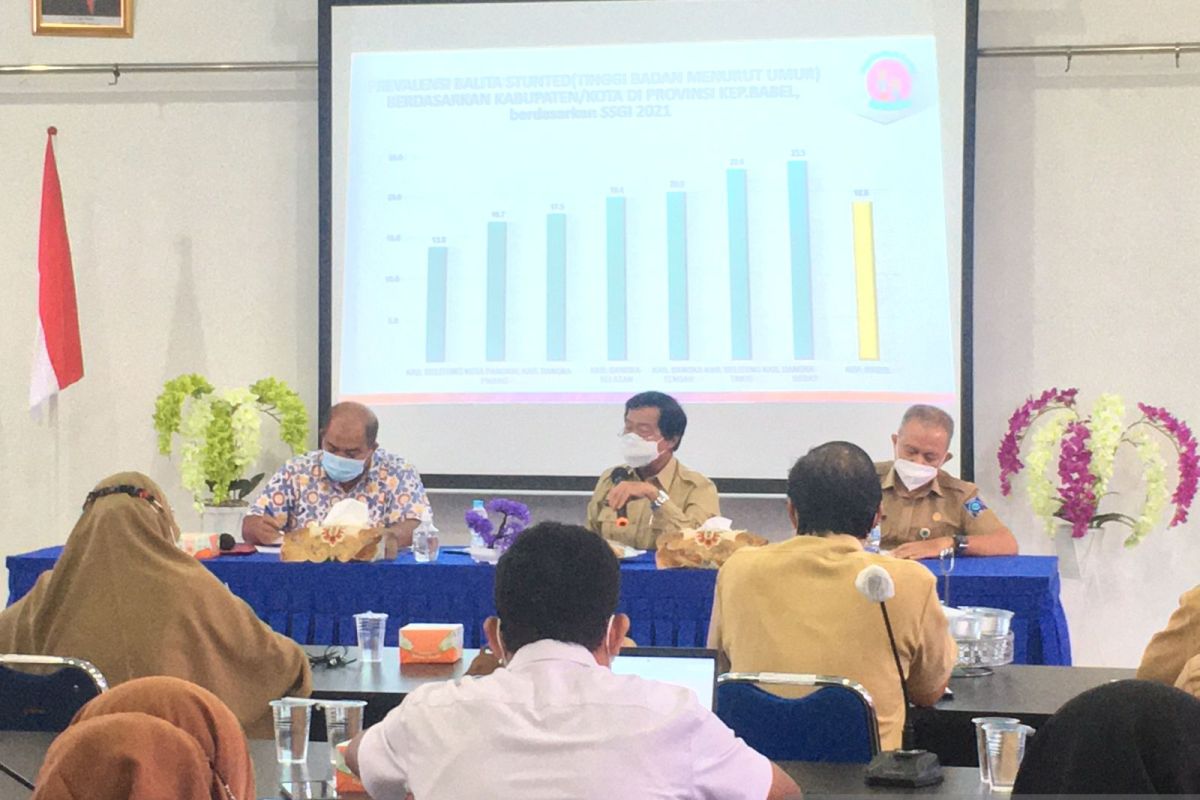Pangkalpinang, Bangka Belitung (ANTARA) - The Bangka Belitung Islands provincial government said it has prepared an action plan to expedite stunting reduction by adjusting identification and mapping for each location.
"As the initial step, we have prepared an action plan based on the mapping conducted by the acceleration team," Deputy Governor of Bangka Belitung Islands, Abdul Fatah, informed here on Wednesday.
"We expect that this pattern will make handling easy in accordance with on-field demand and will be more accurate," he explained.
According to Fatah, the biggest causes of stunting are a chronic lack of nutrition in children, low water access coverage, and poor sanitation.
However, low levels of education in parents, wrong parenting, and lack of access to health workers, especially nutritionists, in monitoring infant development can also lead to stunting, he added.
"There are several causes. Hence, the formulated action plan is based on identification and, as a result, it will be accurate," he said.
The action plan has been prepared by including inputs from the Bangka Belitung's Regional Development Planning Agency (Bappeda), he added.
Related news: Stunting results in low-quality generation: official
The national action plan also encompasses an integrated nutrition intervention approach, stunting risk family approach, as well as multi-sector and multi-party approach, he said.
"The stunting figure in Bangka Belitung tended to decline from 2017–2019 and is under the national figure," Fatah noted.
"In 2019, it was at 19.93 percent while the national figure was at 27.70 percent," he elaborated.
The provincial government remains committed to making efforts to bring down the figure further till there are no more stunting cases, he said.
Stunting handling focus in Bangka Belitung in 2022 is based on the 2021 Indonesia Nutrition Status Study (SSGI) that encompasses all entire districts and cities with provincial prevalence rate of 18.6 percent, he added.
The highest stunting figure was recorded in West Bangka at 23.5 percent, followed by East Belitung 22.6 percent, Central Bangka 20 percent, South Bangka 19.4 percent, Bangka 17.5 percent, Pangkalpinang 16.7 percent, and Belitung 13.8 percent, he said.
To this end, the provincial government urged all related institutions and other stakeholders to align their perception and goal, Fatah said.
They should be active in carrying out the action plan and responsibility based on their respective duties and functions, he added.
This action plan cannot be implemented by one regional institution, but will need the collaboration of several institutions as well as stakeholders, starting from carrying out promotional, preventive, curative, and rehabilitative efforts, Fatah said.
Related news: Planning pregnancies can help prevent childhood stunting: BKKBN
Related news: BKKBN collaborates with Education Ministry to eradicate stunting










